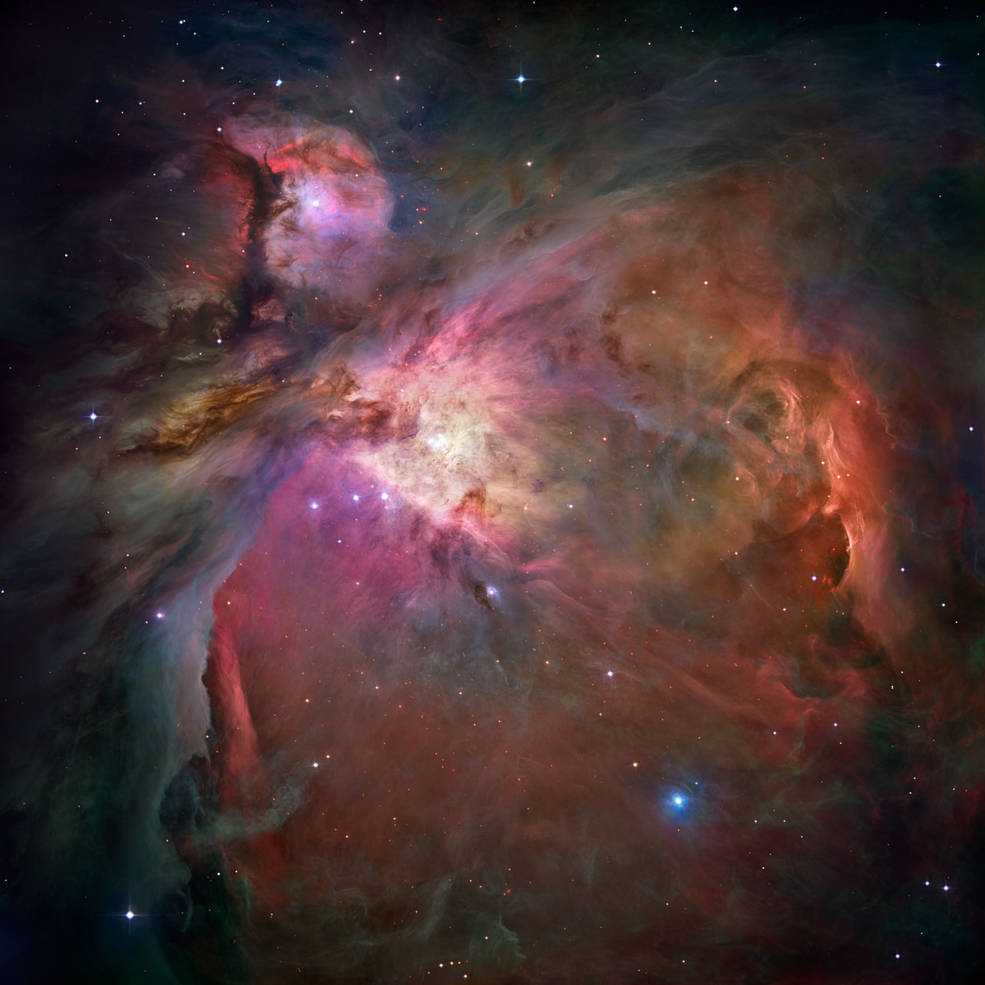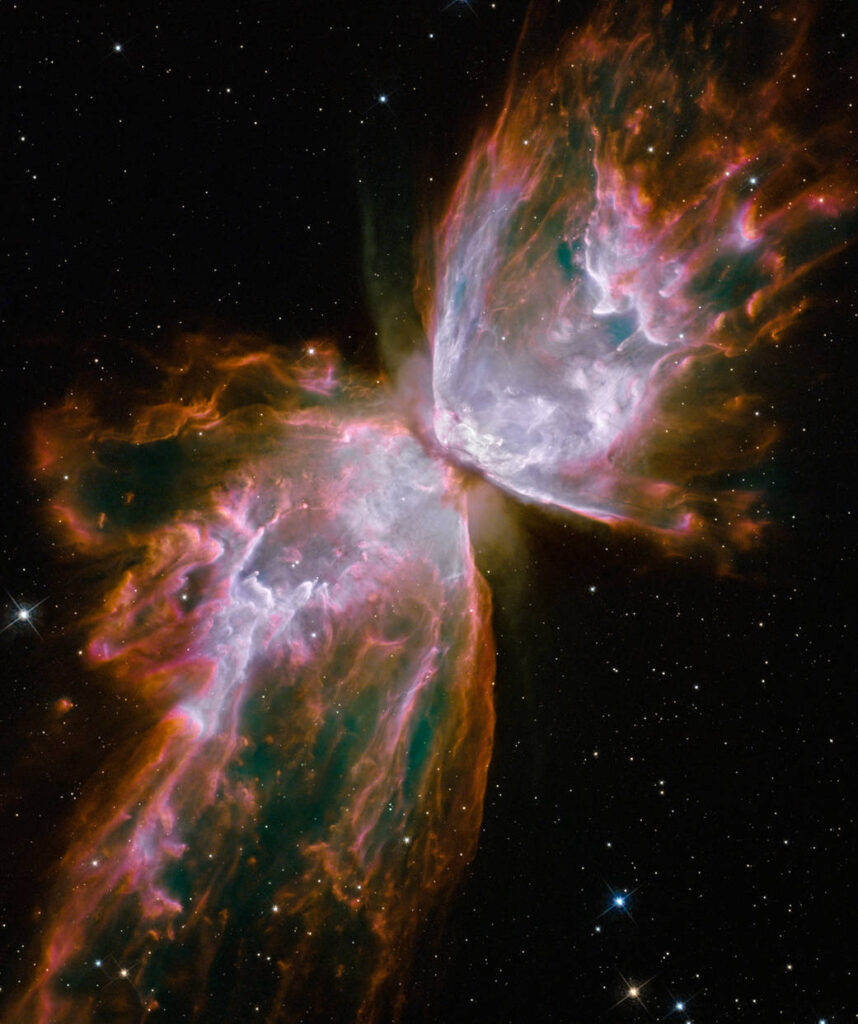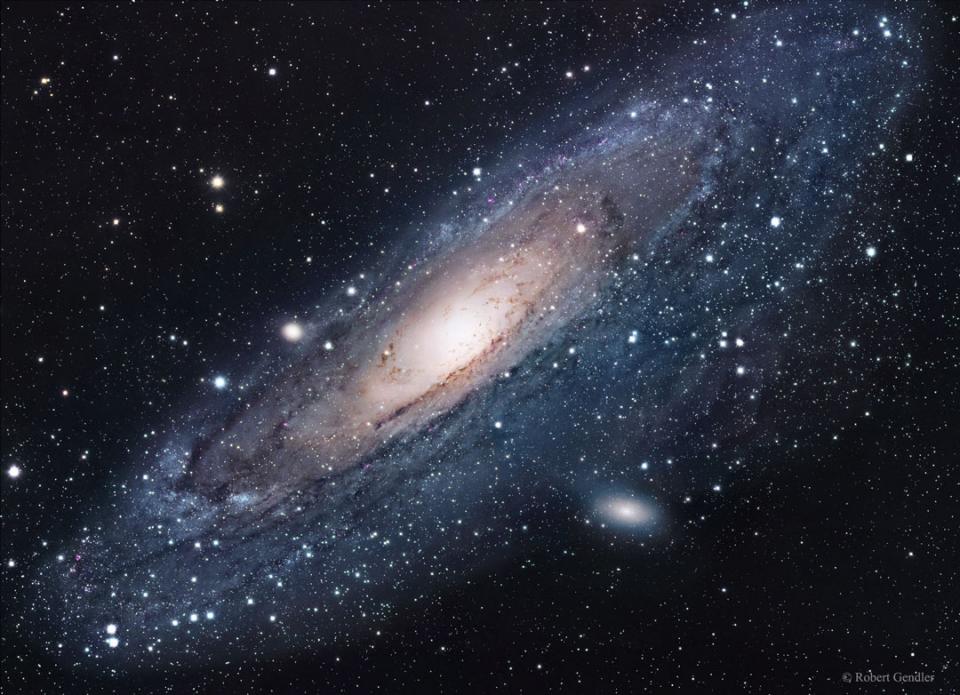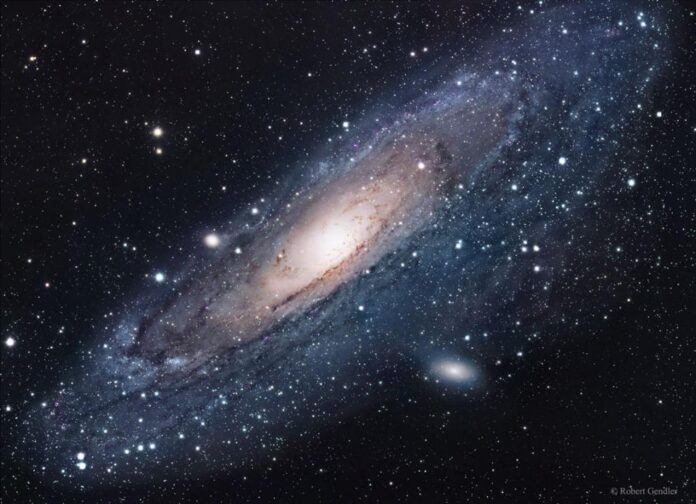The universe is a vast and beautiful place, filled with cosmic objects that leave us in awe. In this blog, we’ll explore ten of the most stunning and scientifically significant cosmic objects, from the swirling clouds of the Orion Nebula to the intricate patterns of the Cat’s Eye Nebula. Join us on a journey of discovery and appreciation for the beauty of the cosmos.
The Orion Nebula



Orion Nebula
The Orion Nebula is a stunning diffuse nebula located in the Orion constellation. Its beauty lies in the swirling clouds of gas and dust that form intricate patterns, creating a breathtaking visual display. The Orion Nebula is one of the brightest nebulae in the sky and can be seen with the naked eye. Beyond its beauty, the Orion Nebula is also scientifically significant because it is a stellar nursery, where new stars are born. Its complex structure and star-forming activity have made it a popular object of study for astronomers seeking to understand the mysteries of the universe.
The Crab Nebula
The Crab Nebula is a stunning and intricate supernova remnant located in the Taurus constellation. Its beauty lies in the delicate and intricate filaments of gas and dust that form intricate patterns, creating a stunning visual display. The Crab Nebula is scientifically significant because it is the result of a supernova explosion that was observed and recorded by humans in the year 1054. It has since been studied extensively by astronomers seeking to understand the physics of supernovae and the processes that govern the behavior of cosmic objects. The Crab Nebula also contains a rapidly rotating neutron star at its center, known as a pulsar, which emits intense bursts of radiation and provides a unique laboratory for testing fundamental theories in physics.
The Eagle Nebula
The Eagle Nebula is another stunning nebula located in the Serpens constellation. Its beauty lies in the intricate pillars of gas and dust that create a stunning visual display. These pillars are illuminated by the ultraviolet light from nearby hot young stars, creating a glow that is both beautiful and awe-inspiring. The Eagle Nebula is scientifically significant because it is a region of active star formation, providing astronomers with valuable insight into the processes that govern the birth and evolution of stars. In particular, the Eagle Nebula is home to several young star clusters, including the famous “Pillars of Creation,” which provide a glimpse into the earliest stages of star formation. By studying the Eagle Nebula, astronomers can better understand the mechanisms that drive the formation of stars and the evolution of the universe as a whole.
The Sombrero Galaxy
The Sombrero Galaxy is a beautiful and unique galaxy located in the Virgo constellation. Its beauty lies in the distinctive shape of its central bulge and the prominent dust lane that surrounds it, creating the appearance of a wide-brimmed hat. The Sombrero Galaxy is scientifically significant because it is a prime example of a spiral galaxy with a large central bulge, providing astronomers with valuable insight into the structure and evolution of galaxies. In particular, the Sombrero Galaxy has been studied extensively to better understand the formation and evolution of galactic bulges, which are thought to be closely related to the growth of supermassive black holes at the centers of galaxies. By studying the Sombrero Galaxy and other galaxies like it, astronomers can better understand the mechanisms that drive the evolution of galaxies and the role that supermassive black holes play in this process.



The Pillars of Creation
The Pillars of Creation are a stunning and iconic feature of the Eagle Nebula. These massive columns of gas and dust are illuminated by the light from nearby stars, creating a visually striking and ethereal display. The Pillars of Creation are scientifically significant because they represent a region of intense star formation, providing astronomers with valuable insight into the processes that govern the birth and evolution of stars. In particular, the Pillars of Creation have been studied extensively to better understand the mechanisms that drive the formation of massive stars, which are critical to the evolution of galaxies and the formation of new solar systems. By studying the Pillars of Creation, astronomers can better understand the complex interplay between gravity, gas, and dust that shapes the evolution of the universe.
The Butterfly Nebula
The Butterfly Nebula, also known as the Twin Jet Nebula, is a stunning and unique planetary nebula located in the constellation of Ophiuchus. Its beauty lies in the intricate twin lobes of gas that create the appearance of delicate butterfly wings. The Butterfly Nebula is scientifically significant because it is one of the few known planetary nebulae that exhibit bipolar symmetry, with two lobes of gas and dust that are ejected from the central star. This unique structure provides astronomers with valuable insight into the late stages of stellar evolution, when a star expels its outer layers and forms a planetary nebula. By studying the Butterfly Nebula and other planetary nebulae like it, astronomers can better understand the mechanisms that drive the evolution of stars and the role that they play in shaping the structure and evolution of the universe.



The Ring Nebula
The Ring Nebula, also known as Messier 57, is a breathtaking planetary nebula located in the constellation Lyra. Its beauty lies in the circular ring of gas and dust that surrounds the central white dwarf star, creating a visually striking and ethereal display. The Ring Nebula is scientifically significant because it provides astronomers with a unique opportunity to study the late stages of stellar evolution, when a star expels its outer layers and forms a planetary nebula. By studying the Ring Nebula and other planetary nebulae like it, astronomers can better understand the processes that govern the formation and evolution of stars, as well as the mechanisms that drive the enrichment of the interstellar medium with heavy elements. The Ring Nebula has been extensively studied using a range of telescopes and instruments, including the Hubble Space Telescope, which has provided stunning high-resolution images of this beautiful object.
The Cat’s Eye Nebula
The Cat’s Eye Nebula, also known as NGC 6543, is a stunning planetary nebula located in the constellation Draco. Its beauty lies in the intricate and complex shell of gas and dust that surrounds the central white dwarf star, creating a visually striking and ethereal display. The Cat’s Eye Nebula is scientifically significant because it provides astronomers with a unique opportunity to study the late stages of stellar evolution and the processes that govern the formation and evolution of planetary nebulae. The complex structure of the Cat’s Eye Nebula is believed to be the result of a series of outbursts from the central star, which have shaped and sculpted the surrounding gas and dust over time. By studying the Cat’s Eye Nebula and other planetary nebulae like it, astronomers can better understand the mechanisms that drive the enrichment of the interstellar medium with heavy elements and the role that planetary nebulae play in shaping the evolution of galaxies. The Cat’s Eye Nebula has been extensively studied using a range of telescopes and instruments, including the Hubble Space Telescope, which has provided stunning high-resolution images of this beautiful object.
The Helix Nebula
The Helix Nebula, also known as NGC 7293, is a stunning planetary nebula located in the constellation Aquarius. Its beauty lies in the intricate and delicate structure of gas and dust that surrounds the central white dwarf star, creating a visually striking and ethereal display. The Helix Nebula is scientifically significant because it provides astronomers with a unique opportunity to study the late stages of stellar evolution and the processes that govern the formation and evolution of planetary nebulae. The complex structure of the Helix Nebula is believed to be the result of a series of outbursts from the central star, which have shaped and sculpted the surrounding gas and dust over time. By studying the Helix Nebula and other planetary nebulae like it, astronomers can better understand the mechanisms that drive the enrichment of the interstellar medium with heavy elements and the role that planetary nebulae play in shaping the evolution of galaxies. The Helix Nebula has been extensively studied using a range of telescopes and instruments, including the Hubble Space Telescope, which has provided stunning high-resolution images of this beautiful object.
The Andromeda Galaxy

The Andromeda Galaxy, also known as M31, is a spiral galaxy located approximately 2.5 million light-years away in the constellation Andromeda. Its beauty lies in its vast and intricate structure, which spans over 220,000 light-years and contains billions of stars, gas, and dust. The Andromeda Galaxy is scientifically significant because it is the closest large galaxy to our own Milky Way, making it a crucial object for studying the formation and evolution of galaxies. Astronomers have used a variety of techniques to study the Andromeda Galaxy, including observing its stars, gas, and dust, as well as its interactions with other nearby galaxies. By studying the Andromeda Galaxy and other nearby galaxies, astronomers can better understand the processes that govern the formation and evolution of galaxies, including the role of dark matter in shaping their structure and dynamics. The Andromeda Galaxy is visible to the naked eye from dark locations, making it a popular target for amateur astronomers and a source of inspiration for artists and poets throughout history.
Conclusion
In conclusion, the universe is filled with beautiful and awe-inspiring objects that not only captivate our senses but also provide valuable insights into the workings of the cosmos. From the intricate structures of nebulae to the vastness of galaxies, each cosmic object offers a unique opportunity for scientific exploration and appreciation of the beauty of the universe. By studying these objects, astronomers can better understand the processes that shape the cosmos and our place within it. It is important to appreciate and celebrate the beauty of the universe as it inspires us to continue exploring and learning about the mysteries of the cosmos.


